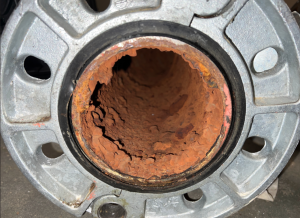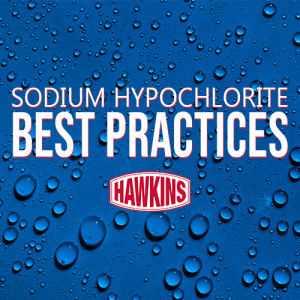Why is Corrosion Control so Important?
In the realm of water treatment, ensuring the safety and quality of drinking water is paramount. One critical aspect of this is controlling corrosion within water distribution systems, a key factor in meeting the Environmental Protection Agency’s (EPA) Lead and Copper Rule compliance. Effective corrosion control not only protects public health but also extends the lifespan of water infrastructure, thereby reducing long-term costs and supporting municipalities across the nation.
Understanding the Lead and Copper Rule

The EPA’s Lead and Copper Rule, established in 1991, aims to minimize lead and copper levels in drinking water. Lead and copper primarily enter the water supply through the corrosion of plumbing materials containing these metals. When corrosion occurs, lead and copper can leach into the water, posing significant health risks, particularly to vulnerable populations like children and pregnant women. As well as this, updates to this rule are still forthcoming, the last being in October of 2024. To remain compliant with new regulations, water systems must stay vigilant.
The Role of Corrosion Control
Corrosion control is a preventative measure that involves adjusting the water chemistry to prevent the leaching of metals from pipes into the drinking water. This can be achieved through several methods, including:
- pH Adjustment: Optimizing pH level to reduce the solubility of lead and copper.
- Corrosion Inhibitors: Adding chemicals, such as phosphates, can curb corrosion by forming a protective barrier inside pipes.
- Alkalinity Control: Balancing alkalinity to stabilize pH levels and reduce corrosivity.
Strategies for Effective Corrosion Control
Implementing an effective corrosion control program involves a multi-faceted approach that combines material selection, water treatment chemicals, regular monitoring and maintenance, pH and alkalinity adjustment, and public education.
Choosing non-corrosive materials like plastic or stainless steel, applying protective coatings, and adding chemicals such as phosphates to form a protective film inside pipes are essential steps. Consistent monitoring of water quality parameters and regular system maintenance help manage corrosion by-products, while adjusting pH and alkalinity reduces water corrosivity. Public education about these efforts fosters transparency and community support. Effective implementation of these strategies requires technical expertise, advanced products, and a commitment to continuous improvement, which Hawkins, Inc. excels at providing.
The Hawkins, Inc. Advantage
Founded in 1938, Hawkins, Inc. has built a legacy of excellence in the chemical industry. Our almost century-long experience has allowed us to
develop a deep understanding of the unique challenges associated with water treatment and corrosion control. Hawkins approaches customer challenges scientifically leveraging our in-house laboratory services. As well as this, our in-house formulating and manufacturing capabilities empower us to produce effective and efficient products consistently. By controlling the production process, we ensure that our corrosion control products are of exceptional quality and reliability. This level of control allows us to respond quickly to the ever-evolving needs of our clients and the regulatory landscape.
Meeting Customers’ Expectations Comes First
What truly sets Hawkins apart is our customer-centric approach to doing business. We believe in building strong, lasting relationships with our clients, centered on trust, transparency, and exceptional service. Our team of experts works collaboratively with municipalities and water treatment facilities to tailor solutions that precisely meet their needs.
Conclusion
Corrosion control is a vital component in achieving EPA’s Lead and Copper Rule compliance and safeguarding public health. At Hawkins, Inc., we are dedicated to providing superior products and services that make this possible. Our in-house expertise, commitment to quality, and extensive industry experience set us apart as a trusted partner in water treatment. Together, we can ensure safe, clean drinking water for communities across the nation. Thank you for your time in reading this article – we look forward to helping you improve your water treatment processes!
For more information on how Hawkins, Inc. can assist with your corrosion control needs, please contact us at (877) 795 8719 or fill out a contact form on our corrosion control page!
About Hawkins
Hawkins, Inc. was founded in 1938 and is a leading specialty chemical and ingredients company that formulates, distributes, blends and manufactures chemicals and ingredients for its Industrial, Water Treatment, and Health & Nutrition customers. We create value for our customers through superb service and support, quality products, and personalized applications.





